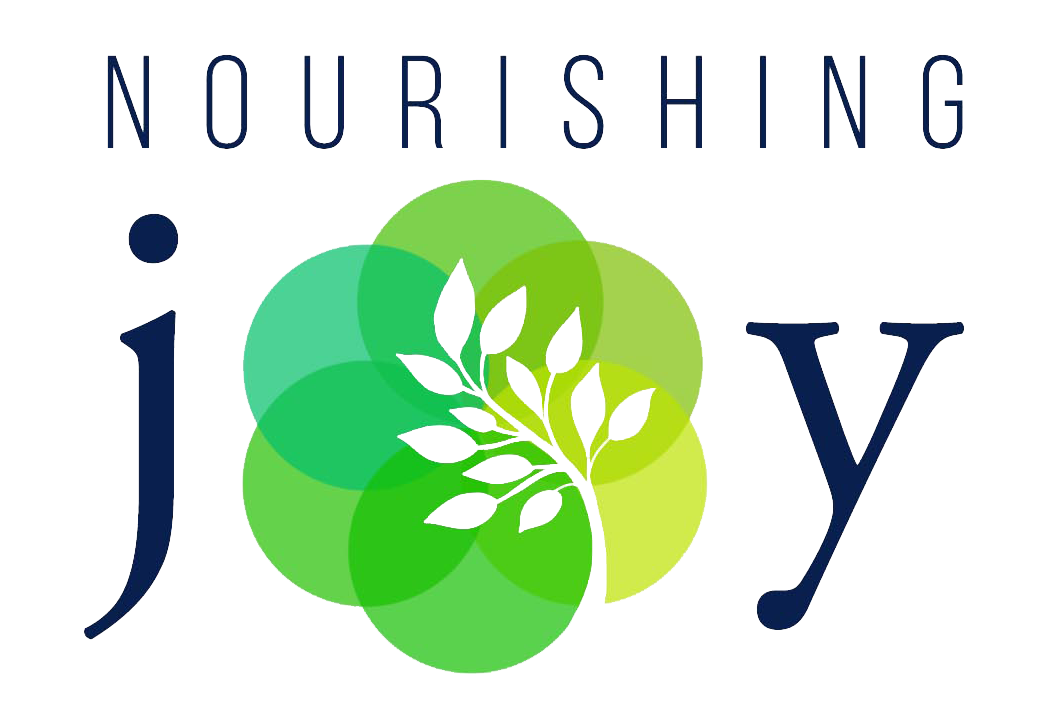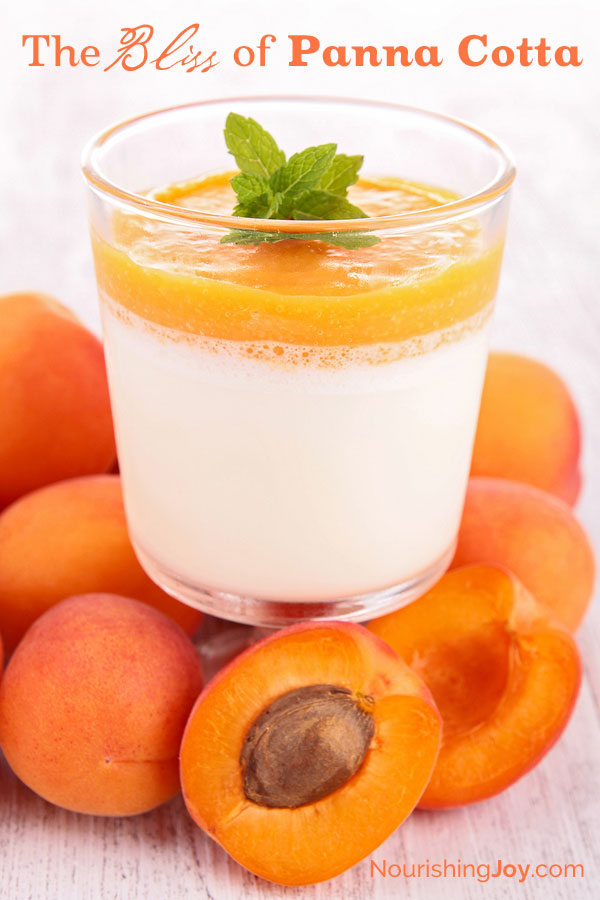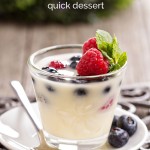Panna Cotta: The Perfect, Elegant 5-Minute Dessert
This post may contain affiliate links, including those from Amazon.com, which means we earn a small commission off your purchases. And here's the thing: We only mention services and products that we think are truly worth your attention, whether they're free, paid, or otherwise. This site relies on YOUR trust, so if we don't stand behind a product 110%, it's not mentioned. Period.
I don't know why I haven't waxed poetic about panna cotta before, as – other than whipping heavy cream into billowy clouds to dollop on top of fresh berries – it is truly the easiest dessert you can ever make. It's also comprised entirely of deeply nourishing ingredients and it's very versatile, both in flavor and in season.
Panna cotta, or cooked cream, is a very softly set pudding that originated in northern Italy. And what makes panna cotta, well, panna cotta, is gelatin. Typically puddings and custards are thickened with eggs, which I adore for the nourishment found in the egg yolks and the absolutely silky mouth-feel, but in the case of panna cotta, the gelatin provides the merest of wiggles and allows for great versatility. Interestingly enough, the earliest recipes describe simmering the cream with fish bones, as the collagen set the cream.
While we no longer make panna cotta with fish bones, many of you likely know that gelatin holds a special place in my heart because it provides nourishment that isn't found in many other places and it creates a soft, luscious texture all its own.
So, before I get to the basics of how to make perfect panna cotta, let me break down all the reasons to swoon over it and why to make it for your next gathering, no matter what that gathering might be.
Easy to make
Panna cotta requires a modicum of ingredients, usually milk, cream, sugar, and gelatin. It comes together in about five minutes and doesn't require the oven. Talk about simple!
You can add in flavorings (like vanilla, almond, matcha, rosewater, or chocolate), pair it with fresh fruit, or drizzle a flavored syrup over the top.
You can switch out the milk for fruit purée or fruit juice, such as sunny grapefruit juice, pomegranate juice, or strawberry purée, and then leave out the sugar for a sophisticated, flavorful dessert.
You can make it dairy-free by using coconut milk or homemade almond milk.
Basically, what I'm trying to say is – panna cotta is super-simple and you can make it almost anyway you like with very little extra work.
Nourishing ingredients
Milk and cream contain essential fats for heart and brain function in addition to fat-soluble vitamins. And if you're using raw cream, those fat-soluble vitamins are still in their natural state (rather than having been added synthetically after pasteurization) and there's also likely cancer-fighting CLA (conjugated linoleic acid), if the cows have been on pasture during extended periods of sunshine.
(Read more about why our family chooses to drink raw milk.)
This is where panna cotta especially shines. Since you don't have to heat or bake the milk and cream like you do with with most custards, those fat-soluble vitamins remain largely intact, so you get the full nutritional benefit of the raw food with the mouth-feel and satisfaction of a cooked dish. And even if you don't use raw milk and cream, those ingredients will satisfy and nourish deeply. 🙂
And of course, we can't forget gelatin. I would go so far as to say that gelatin is an essential part of a healthy diet, as it is unique in many respects and synergistically complements other nourishing ingredients. There are three nutritional aspects of gelatin that have most grabbed my attention as I have researched through the years:
- Gelatin aids digestion and heals the gut by keeping gastric mucosa in excellent condition. In a day and age when processed foods often create long-term damage and inflammation in our guts, gelatin is a way to protect our long-term health and even heal damage that's already been done. Considering our guts are where the vast majority of digestion happens, this means that if our guts are inflamed or damaged, we can't digest the GOOD food even when we do eat well.
- Provides the amino acid, glycine, which assists the liver in ridding toxins from your body and is essential for building good-quality collagen, which in turn is essential for strong bones. (It also helps us feel good.)
- Compliments the amino acids found in muscle meats and organ meats, together providing a balance of amino acids, proteins, and other nutrients to detox, reduce inflammation, and ingest the full complement of vitamins and minerals found in animal meats. The modern, industrialized world tends to eat a lot of red meat – but the vast majority of it is muscle meat, which can be inflammatory over time. However, when a person's diet also includes organ meats and gelatin, the inflammatory amino acids in muscle meat are neutralized by the anti-inflammatory properties of other others, especially gelatin. Sounds like panna cotta might be a perfect dessert after a gorgeous steak barbecue, eh?
Of course, there are LOTS more benefits of gelatin and I've gushed about those over here.
Versatile
In addition to being highly versatile when it comes to its ingredients, panna cotta is also incredibly versatile in its uses.
Panna cotta travels well to picnics, it's festive enough for a Christmas feast table, it's simple enough for an everyday dessert, and it's special enough to mark a special occasion.
I even make it for breakfast using yogurt instead of cream and pair it with fresh fruit. 🙂
The only limitation is your imagination.
Frugal
As desserts go, this is a fairly inexpensive one. Yes, cream plays front and center, but even if you use expensive milk and cream from grass-fed cows and nourishing gelatin from pasture-raised beef, the portions are small and the ingredients minimal, and I've never paid more than $0.75 per serving to make this dessert.
How to Make Panna Cotta
Ingredients
- 1 ½ cups heavy cream or full-fat yogurt, see how to make homemade yogurt
- 1 ½ cups whole milk
- ½ cup evaporated cane sugar, honey, maple syrup, sucanat, or brown sugar (see how to make your own brown sugar)
- 1 tablespoon gelatin, see where to buy grass-fed gelatin
Instructions
- Place 1/2 cup of the milk in a small, heavy-bottomed saucepan and sprinkle the gelatin over. Let sit for 5-10 minutes, then heat very gently over low heat just until the gelatin is dissolved. (Dip your thumb and forefinger in the warm-ish milk and rub them together. You won't feel any granules when they are fully dissolved.)
- Meanwhile, pour the remaining milk, the cream or yogurt, and sugar in a blender. Blend until very smooth, then with the motor running, pour in the gelatin-milk mixture.
- Pour immediately into a container that can hold at least 1 quart of liquid (the shallower, the better) OR multiple small containers and place in the refrigerator. Let sit for at least two hours to firm up.







I WILL be making this! It sounds like it is to die for. YUM! I am thinking honey and strawberries! Maybe I will do it now!
Are you aware that store-bought gelatin is made of PIG and HORSE HOOVES? I called the company and asked. I refuse to eat it! Is there an alternative that you are aware of?
Yes, indeed, there are alternatives. The gelatin that is linked to within the text of the recipe is a 100% beef gelatin from bovine hides of animals that were raised and slaughtered ethically.
If you want to know more about gelatin, I go into a bit more of the nitty-gritty here: https://nourishingjoy.com/benefits-of-gelatin/
If gelatin is absolutely out of the question in your mind, there are plant-based gelling agents, such as agar-agar, but they don’t offer the same health benefits as gelatin, so I haven’t used them in this context.
I hope that helps!
We made this as a simple dessert for our week at the coast with family and it was amazingly delicious and so easy to make! My daughter has egg allergies so it can be hard to find creamy desserts that don’t take too many alterations – this was perfect! Thanks for sharing!
I’m so glad, Sarah! <3 (And it's so lovely to hear from you!)
Hello Kresha, I am just starting out with all things organic for my family and saw your website. I would love to try gelatin as well. I was wondering what would you use instead of dairy for your panna cotta recipe please? 2 of the 3 little boys are sensitive to dairy, not allergic. I think it could have been unhappy guts, thus the change in our diet. We use Almond milk but how can I replace your cream please? Thank you and blessings, h.
Hoiva, Feel free to replace the milk and cream with the same ingredient, for example, use almond milk for both of them, making a total of 3 cups almond milk used in the recipe.
I hope your family loves it as much as mine does! 🙂
Hello….
I have 4 gallons of raw milk that have been in the refrigerator for several weeks – I would consider them soured at this point…..and I know there are many ways to use soured raw milk…..and I am hoping this recipe is one if them. Do you think I can use soured raw milk that has been kept in the fridge to make the panna cotta?
THANK YOU
~toni
Yes, you certainly can, although I’ll admit, I haven’t used clabber for sweet purposes, so I’m not sure what it would taste like. If you’re up for it, certainly try it. (And I’d LOVE to hear how it goes – I’m absolutely curious.)
As a side note, if you’re looking for ways to use up soured raw milk, two ways I often use it is in homemade sour milk biscuits and if it’s thickened like yogurt, drain it in cheesecloth, sprinkle with cheese and herbs and use like cream cheese. My recipe for sour milk biscuits is here: https://nourishingjoy.com/sour-milk-biscuits/
Good luck and enjoy!